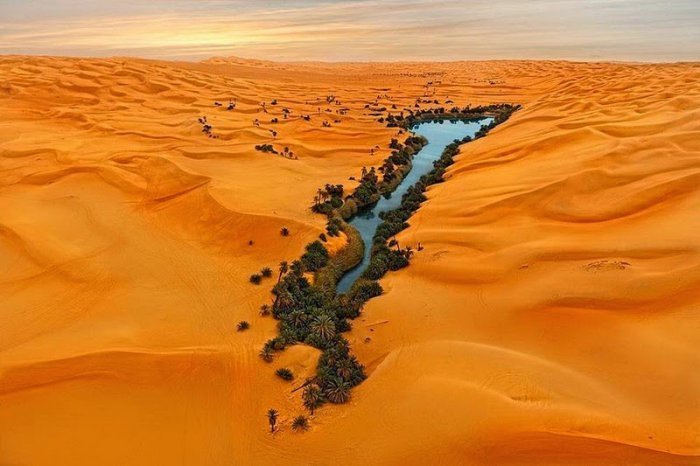A dry, famous, hot desert. This is the Sahara. Was it always like that? No, it was very different in another time. We are not talking about millions of years, but about a few thousand. 5000 years ago, more or less, when the Sahara was green.

There are clues in caves in Laos to help understand the history. It is believed that a previously unknown mega-drought crippled Southeast Asia between 4,000 and 5,000 years ago.
The monsoons and the desert
The article was published in Nature Communications. Scientists explain the consequences of this major climate change. This led to a change in human settlement patterns in Southeast Asia. Now it is inhabited by more than 600 million people.
“In this study we provide the first evidence of this strong connection. When the Sahara was green, there was a disruption to the Southeast Asian monsoons during the mid to late Holocene. ‘The statement is from co-author Kathleen Johnson, a professor at the University of California. Our record is well dated. This suggests a strong connection between North Africa and mainland Southeast Asia during this period. ‘
A paleoclimate data set was created for the study. Johnson and other researchers collected stalagmite samples from caves in northern Laos. In the laboratory, they measured the geochemical properties of the isotopes of oxygen and carbon. Carbon 14 and trace metals were also found in the samples. This helped them review the occurrence of the drought and extrapolate its impact on the area.

The reduced plant growth in the Sahara led to an increase in dust in the air. It cooled the Indian Ocean and shifted Walker’s circulation pattern east. This made it behave in a similar way to current El Niño events. And it resulted in a sharp decrease in monsoon humidity in Southeast Asia that lasted for more than 1000 years.
Changing Southeast Asia
Anthropologists and archaeologists have previously studied the effects of the disappearance of the Green Sahara. It is also known as the African rainy season. It happened in the population centers closest to West Asia and North Africa. Highlights the collapse of the Akkadian Empire of Mesopotamia and the expansion of grazing along the Nile.
The results provide a novel and convincing explanation for the origin of the Southeast Asian mega-drought. They help to understand social changes in many parts of the tropics.
The mega-drought in the middle Holocene could have been an incentive. This led to massive population movements and the introduction of new, more resilient subsistence strategies. It even favors the beginning of Neolithic agriculture in continental Southeast Asia.
Our planet is constantly changing. Let’s just hope the changes below are for the better, even as we fear the current landscape.

